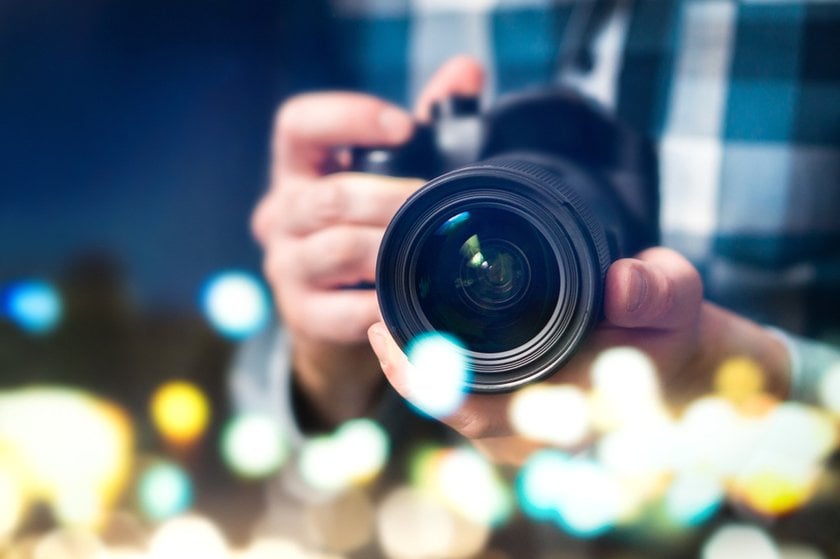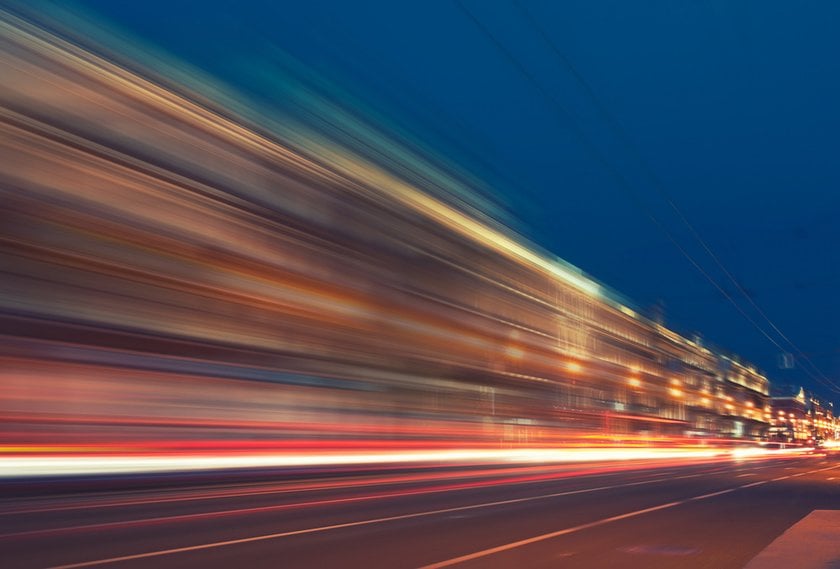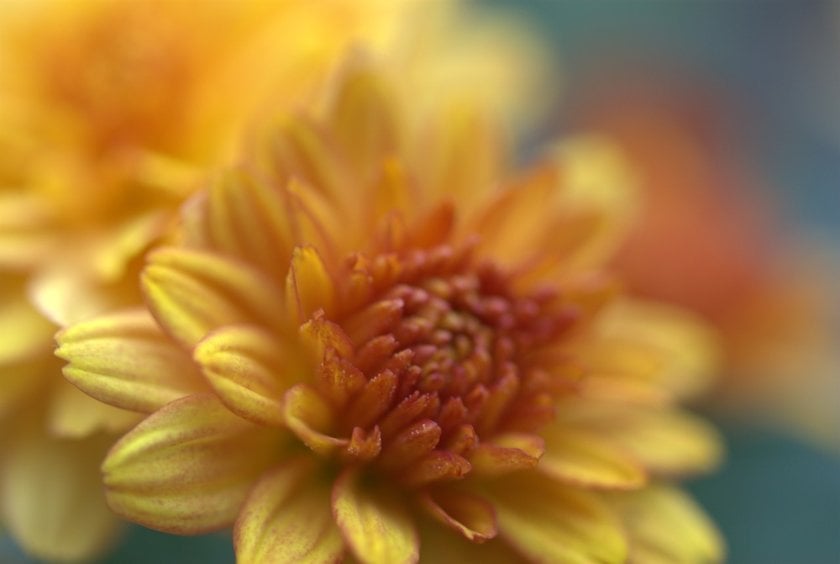From Christmas cards to photo reports, from music festivals and wedding pictures to product commercials — the bokeh effect is commonly applied in many genres of photographic art. And what does bokeh mean? It derives from a Japanese word loosely translated as "being out of focus."
It is probably confusing for many photographers, as blurry images are usually treated as "wasted" material. Most photo editing software, such as Luminar Neo, include features that can fix the focus and make the photos sharper. Also, images can be intentionally blurred, which benefits your creativity!
It is important to clarify that the bokeh photography definition has nothing to do with the lack of focus on the image, which usually occurs accidentally, and post-processing is required to correct it.
What is bokeh meaning? The essence of the bokeh effect lies in transforming the image's background into a vital component, sharing the spotlight with the primary subject. Background bokeh resembles an artistic canvas, a symphony of shapes, colors, and contrasts. Within this realm, sharp edges and straight lines are conspicuously absent, as the background seamlessly melds to serve its purpose: directing the viewer's gaze toward the subject without any hint of distraction.
In the following sections, we will define in detail what bokeh means in photography and also master techniques and tools to apply this effect to your photos perfectly.
Crafting The Bokeh Effect With A Professional Camera

Bokeh meaning in camera is important to get vivid atmospheric shots. The following section gives a step-by-step guideline on how your camera’s basic characteristics and adjustments can help you take pictures with the bokeh effect.
Lens Choice Is Pivotal
When you look for the word ‘bokeh’ in a photo camera manual, you will find that bokeh means in camera shooting a subject using a fast lens at the widest aperture, such as f/2.8 or wider. So, the bokeh effect on your picture directly depends on the lens parameters.
Prime lenses with wide apertures are perfect for bokeh because they produce a shallower depth of field (or, in simple words, a blurrier background). Even if you don’t consider changing the lenses, adjust the aperture as wide as possible in the camera settings.
Choose An Appropriate Subject And Focus On It
The focal point of your image should be conspicuously separated from its background. Opt for subjects with textures, colors, or intriguing details that distinctly contrast with the softly blurred background.
Employ either your camera's autofocus or manual focus function to guarantee the sharpness and clarity of your chosen subject. Employ a tripod or apply reliable handheld techniques to avoid unintentional camera movement. This stability is essential to attain the exacting precision needed when capturing your subject. Conversely, intentionally blur the background to craft a subtle, out-of-focus effect. This juxtaposition serves as a crucial element in realizing the sought-after bokeh effect.
Background And Composition
With a wide-open lens, objects or lights in the background undergo a mesmerizing metamorphosis, turning into captivating, luminous orbs. Whether distant city lights, sparkling fairy lights, or glistening water droplets, they all serve as excellent ingredients for crafting remarkable bokeh effects.
Exercise meticulous care when framing your shot, ensuring that the softly blurred background elements contribute to the overall visual charm of your photograph.
The spatial relationship between your subject, the background, and your camera is a critical factor. Experiment with varying distances to discover the ideal balance for your specific scene. Frequently, positioning your subject relatively close to the camera while maintaining a considerable distance from the background yields the most favorable outcomes.
Advanced yet easy-to-use photo editor
Get Luminar Neo NowBokeh In Action

Bokeh is not just a pretty backdrop; it serves various purposes, elevating your photographs to new heights. Let's unravel the diverse roles bokeh can play in photography.
Bokeh is a great technique for portrait photography, where the subject (model) should be in the center of the viewers' attention. The soft, dreamy backdrop ensures that nothing distracts from the subject's expressions or features, allowing their personality to shine.
You can guide the viewer's gaze through the visual story you're trying to tell by highlighting key details while letting others fade into obscurity. In storytelling photography, bokeh navigates the audience through the plot you create with pictures.
Bokeh is a beloved technique in event and wedding photography. It adds a touch of elegance to candid shots, romanticizes the scenes, and creates stunning backdrops for capturing memorable moments.
Urban photographers love bokeh for how it helps to reflect the mood. You can convey a specific atmosphere by choosing the right background elements and manipulating your camera settings. Glowing lights can evoke romance, while blurred city lights can create a sense of urban hustle and bustle.
Bokeh is invaluable in macro photography, as it helps to isolate a small insect, a fragile flower, or any other tiny subject against a soft, colorful backdrop. This isolation reveals the subject's beauty and intricacies.
In product photography, bokeh can elevate the appeal of the showcased item. It helps to isolate the product from the background, making it look more attractive and desirable for potential customers.
Creating Bokeh In Post-Editing

Previously, to achieve a background blur when editing a photo, you would have to spend a lot of time making the image look real. Now, we can do it in just a few clicks. Beautiful bokeh in seconds from Luminar will pleasantly surprise you. Portrait Bokeh AI allows you to create fashion and daily portraits at different locations easily. The best way to make the main subject the right focus is to use modern technology in your artwork. Or, if you use Adobe Photoshop as a photo editing software, download a Full Collection of Bokeh Photoshop Overlays that you can use to add bokeh while editing photos or make your own bokeh lights brighter and more visible.
Exclusive Tools of Endless Possibilities in One AI Editor
EXPLORE NOW!Bottom Line

In this article, we have ventured into the realm of bokeh — from understanding its essence to mastering the effect with a professional camera and exploring its practical applications.
Bokeh transcends mere background blur; it embodies the visual language of storytelling, the catalyst for evoking emotions, and the artistic tool with which you craft using light. It captivates the viewer's attention, guiding it to the core of the image, where it encapsulates the moment's essence and preserves it for eternity.
Whether it's to emphasize a subject, set a mood, tell a story, or add a touch of magic, bokeh is your faithful companion in capturing life's most precious moments. With the right combination of technique, vision, and a dash of creativity, you have the power to create photographs that are not just visual records but windows into the soul of your subjects.




